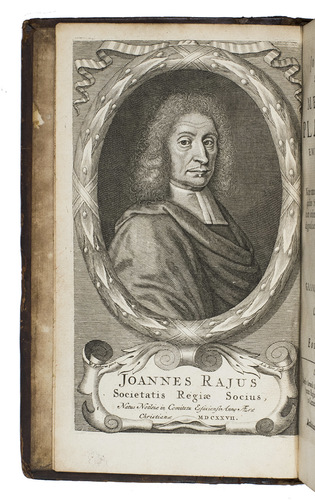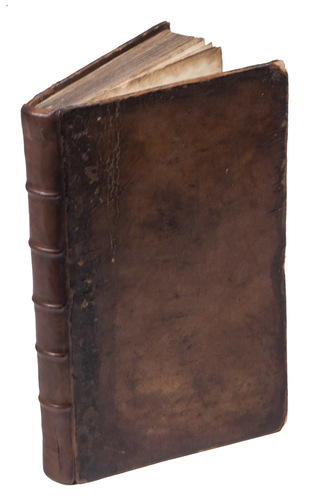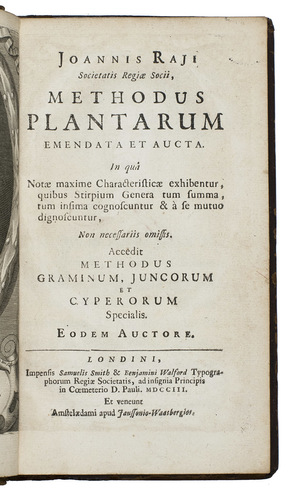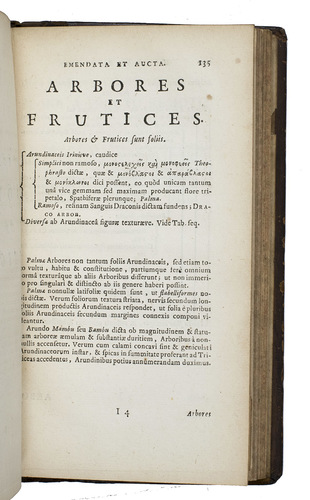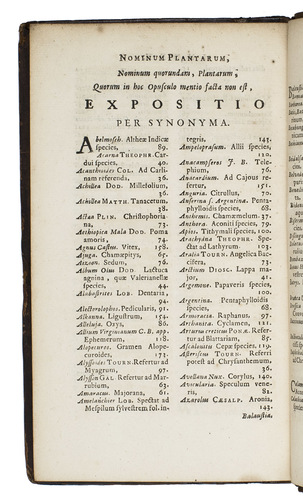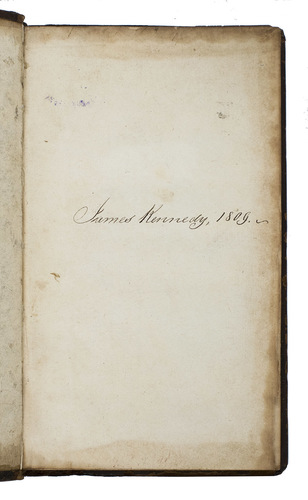RAY, John. (Johannes RAIUS).
Methodus plantarum, emendata et aucta. In quâ notae maxime characteristicae exhibentur, quibus stirpium genera tum summa, tum infima cognoscuntur & à se mutuo dignoscuntur ... Accedit methodus Graminum, Juncorum et Cyperorum specialis. Eodem auctore
"London" & Amsterdam, "Samuel Smith & Benjamin Walford"; J. & G. Janssonius van Waesberge [printed in Leiden], 1703. 8vo. With an integral engraved frontispiece portrait of the author and an inserted letterpress hierarchical table (folded up at the foot). Contemporary calf, rebacked. [35], [1 blank], 202, [26] pp.
€ 2,250
First issue of the second edition, the first in its definitive expanded form, of one of the earliest botanical classifications, written by the famous English botanist John Ray (1627-1705), the great pre-Linnaean pioneer of classification. "The father of British botany", he first published his floral classification in 1682 as Methodus plantarum nova , but the definitive enlarged form of his systematic classification first appeared in the present second edition of 1703 with a revised title.
Ray had completed this new edition by 1698, when he wrote to Dr. Sloane, "as to my methodus emendata it lies by me finished, and ready for the press, but I believe will hardley ever be printed. No bookseller will undertake it." This edition, a great improvement on that of 1682, might never have been published but for the kindness of the professor of botany in Leiden, Dr. Peter Hotton, who arranged for 1100 copies to be printed there, so that he might see it through the press. The printers finished their task in 1703.
Although printed in Leiden and published in Amsterdam, the imprint on the title-page gives a false London imprint, though also indicating it was sold by Janssonius van Waesberge in Amsterdam. This was done against the author's wishes by the Waesberges who thought it would be to their advantage. Ray showed his gratitude to Dr. Hotton by dedicating the work to him. The frontispiece shows a portrait of the author engraved by Abraham de Blois after a painting by William Faithorne.The folding table and quire M slightly browned, but otherwise in very good condition. Henrey 317 (7 copies); Stafleu & Cowan 8700 ed. 2, 1st issue (6 copies); STCN (2 copies); not in Hunt; Johnston.
Related Subjects:






